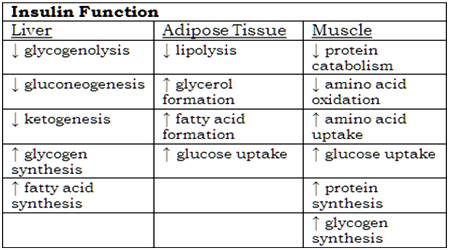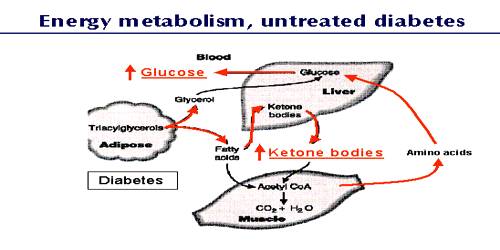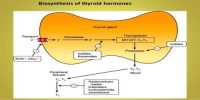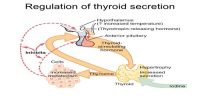Insulin is a hormone that is significant for metabolism and deployment of energy from the ingested nutrients – especially glucose. It is a protein chain or peptide hormone. It helps keeps your blood sugar level from getting too high or too low. Insulin and glucagon work synergistically to keep blood glucose concentrations normal.
Metabolic functions of the insulin
(A) Affect on CHO metabolism:
(i) Effect on muscle:
- Increase glucose entry into cells.
- Increase glycogen – synthesis.
(ii) Effects on the liver:
- Increase glucose uptake,
- ↑ Glycogenesis,
- ↓ Glycogenolysis,
- ↑ Glycolysis,
- ↓ Gluconeogenesis,
- Conversion of excess glucose into fatty acids.
(iii) Effects on adipose tissue:
- ↑ Glucose uptake,
- Glycerol phosphate synthesis which supplies glycerol that combines with fatty acids to form triglycerides.
(iv) Effects on other cells. (Except brain cells)
- ↑ Increases glucose entry.

Tab: Metabolic functions of Insulin
(B) Effects on fat metabolism:
(i) Effects on the liver:
- ↑ Lipid Synthesis,
- Ketogenesis.
(ii) Effects on adipose tissue;
- ↑ Fatty acid synthesis
- ↑ α glycerol phosphate synthesis which supplies glycerol.
- Triglyceride deposition combined with fatty acid and glycerol.
- Inhibits hydrolysis of triglycerides stored in fat cells.
- Activation of lipoprotein lipase in the capillary walls of adipose tissue.
- ↑ Utilization of glucose to all cells so decrease the utilization of fat, thus function as a “fat sparer”.
(C) Effects on protein metabolism
(i) Effects on the liver: ↑ Protein synthesis
(ii) Effects on muscle:
- ↑ Transport of amino acids into the cells,
- ↑ Protein synthesis.
- Inhibition of catabolism of proteins.
- ↓ Release of amino acids.
(D) Effects on electrolyte metabolism:
Insulin increases the cell membrane permeability to K+, PO43- causing transport of these ions to the cells.
(E) General effect: Increased cell growth.















